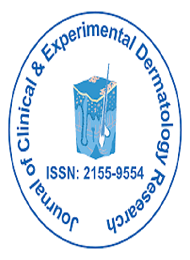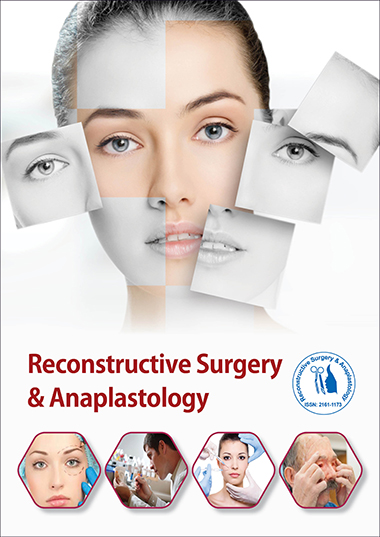Theme: Progression in Skincare and Cosmetology
SKINCARE 2022
We welcome you all the distinguished Nobel laureates, speakers, delegates, Skincare professionals, Dermatologist, Geriatricians, Gerontologists, Palliative care professionals, aging caregivers, anti-aging researchers and healthcare Industry leaders and speakers, from around the world for attending “27th International Conference on Skin Care & Cosmetology” during August 11, 12 – 2022, Venue : Amsterdam, Netherlands
The general theme of the conference focusses on Innovations and Advancements in Skin care and cosmetology. The effects of genetic factors, environmental insults and the benefits of active skin care products and nutrition will be discussed.
Dermatology congress aims to bring together researchers, academicians and scientists from the Dermatology community and to promote interest, stimulate research, and disseminate information on all aspects of environmental and occupational skin diseases. Our aim is to provide outstanding patient care, train and mentor future leaders in dermatology, and advance dermatologic knowledge.
Industry’s top scientists and technologists will discuss actively and give new insights into skin health, beauty, skin age prevention and treatment
Through, members around the world focused on learning about Skincare, Dermatology and its developments; this will be the best opportunity to reach the largest assemblage of participants from the Skincare/Dermatology community. Comportment presentations, distribute information, meeting current and potential scientists, make a splash with new drug developments, and receive name recognition at this two days event in Prague, Czech Republic. World-renowned speakers, the most recent performances, expansions, and the new updates in Skincare and Cosmetology are assurances of this conference.
The attendees can find exclusive sessions and panel discussions on the latest innovations in Dermatology by:
- Lectures from renowned speakers
- Keynote forums by Prominent Professors, Engineers
- Open Innovation Challenges
- Poster presentations by Young Researchers
- Global Networking sessions
- Novel techniques to benefit your research
- Best platform for Global business and Networking opportunities
- Meet the editors of refereed journals, Society and Association members across the Globe
- Excellent platform to showcase the latest innovation and concept in the technical field
Track 1 - Dermatology diseases
Dermatology diseases include common skin rashes to serious skin infections occurring in people of all ages, which may happen due to medications, infections, heat, systemic disorders and allergens. Primary common skin disorders are dermatitis. Atopic dermatitis or atopic eczema is related chronic condition that causes inflamed and restless skin. Mostly it seems to be as patches on the face, neck, limbs or trunk. It subsides for a period as it tends to flare up sporadically. Most of the treatments are based on the management of the symptoms related with it. However most of the dermatological diseases cannot be cured.
Track 2 - Dermatology and covid-19
Many skin symptoms have been reported in connection with infection with Acute Respiratory Syndrome virus 2 (SARS-CoV-2), which covers almost all inflammatory patterns. The diversity of targeted skin lesions is large compared to other bacterial infections that often have symptoms of skin pattern. High visual prevalence (approximately 20% in one study) in adults, who rarely have viral exanthema, is also important. Lack of testing, as well as possible bias reporting in literature causes problems in understanding the true spread of the findings on the skin. SARS-CoV-2 infection affects people of color equally but there is almost no skin test in this figure.
Skin-related skin problems and measures of personal hygiene, skin rashes detected by SARS-CoV-2 infection, and skin rashes as a result of COVID-19 therapeutic agents.
Track 3 - Safety of cosmetics
The FDA works to ensure that cosmetic companies adhere to the rules of keeping cosmetics and personal care products as safe as possible. But while the FDA recommends that cosmetic manufacturers test their products, they do not have to. You can see what has been tested by checking the product label: "WARNING - The safety of this product has not been determined." If the product has not been tested for safety, you must disclose the label.
Some of the safety features that may be associated with cosmetics and personal care products include:
Eye diseases
Spread germs on the skin
Irritation and scratch in the eye
Fire hazards, in the case of aerosol products such as hairspray
Allergies or sensitivity to ingredients
Track 4 - Veneriology and infectious skin diseases
Dermatology deals with all external skin disorders and internal mucous membranes. Venereology is about the disorder that can be spread through sexual contact. These can be caused by bacteria, viruses, parasites or fungi, but almost always on the skin, which is why venereology is also considered part of dermatology. The most common diseases here are syphilis, gonorrhea and lice. HIV infection is also treated by dermatologists and venereologists.
Track 5 - Hair disorders and hair loss management
Most hair disorders aren’t serious, but they are often considered major cosmetic issues that require treatment. Androgenic alopecia is the most common form of hair loss, although there are a number of other hair conditions that can affect the scalp and other parts of the body.
Hair transplantation surgery is done by removing a narrow strip of hair-bearing scalp from the back of the head and filling it in the area with thin or no hair. Today’s most advanced techniques harvest and transplant the naturally occurring 1–4 hair "follicular units" in their natural groupings. Thus Natural appearance can be achieved by modern hair transplantation. This procedure is called Follicular unit transplantation.
Track 6 - Acne and treatment
Oil, bacteria, dead skin cells, and dirt may block the tiny holes called pores on your skin. You may develop a pimple or “zit” because of this. You may develop acne, if your skin is repeatedly affected by this condition.
Acne medications act by reducing the oil production and swelling or they treat bacterial infection. You may not see results for four to eight weeks with most prescription acne drugs. For your acne to clear up completely, it can take many months or years.
Depending on your age, the type and severity of your acne, and what you are willing to commit to, your doctor recommends the treatment regimen. For example, twice a day for several weeks you may need to wash and apply medications to the affected skin. Drugs you take by mouth (oral medication) and topical medications are often used in combination. Due to the risk of side effects, treatment options for pregnant women are limited.
Track 7 - Wound and scares
A wound is a disruption to the body structure due to physical injury. The wound may affect only the skin surface, may be under the skin or might affect the skin on the surface and beneath it. A wound is an incision (cut) from surgery. A wound also can be caused by pressure on bony areas, a fall or accident, tumour growth or radiation therapy. Proper care is important to protect it from infection and help it heal. Scars are healed wounds. Wounds and Scars can also be treated with Aesthetic Medicine and Procedures.
Track 8 - Affects and Side Affects of Cosmetics
The use of cosmetic products is increasing worldwide and at the same time the variety of chemicals used to make these products is also growing. In this way, the risk of allergic reactions, prolonged chemical exposure, alcoholism, side effects, and indiscriminate use also increases. Its effects may range from a simple reaction of hypersensitivity to an anaphylactic process or even a deadly intoxication.
Acne on the face, premature aging, clogged pores, skin and skin allergies, discoloration, Eye diseases are common side effects of cosmetics.
Track 9 - Nonsurgical Liposuction
Non-surgical liposuction can be one of several procedures that use lasers, heat, cooling or sound waves to “destroy” fat cells that will then be excreted from the body as metabolic products. Non-surgical liposuction usually has as little recovery time as surgical liposuction but does not work on large areas of fat. Its use should be limited to small, stubborn areas that are left after adequate nutrition and exercise program or in patients who cannot have surgery. For it to be fully effective, more treatment may be needed.
Track 10 - Skin Grafting
Skin grafting is a closure technique used in dermatology most commonly to close wounds created by the removal of skin cancer. Although currently less favoured than flap closures, grafting can produce a good cosmetic result. Skin grafts, in contrast to flaps, are completely removed from their blood supply, whereas flaps remain attached to a blood supply via a pedicle. Skin grafts are less technically difficult but can be more time-consuming as the procedure creates a second surgical site. Skin grafts can be divided into several categories based on the composition of the graft with each type of graft having unique risks and indications.
Split-thickness skin grafts (STSG) are composed of the epidermis and a superficial part of the dermis.
Full-thickness skin grafts (FTSG) contain both the full epidermis and dermis.
Composite grafts contain skin and another type of tissue, usually cartilage.
Track 11 - Whiteheads and Blackheads
Black heads and white heads are basically the same thing. Both are classified as “non-inflammatory” acne - meaning they are not infected. They are just closed holes that contain dead skin cells and natural oils called sebum that need to come out of the skin. The difference is that blackhead is in the open hole and whitehead is in the closed hole.
When hormones produce more fat and dead skin than pores can form, people develop white heads and blackheads. For many, this increased hormone production is divided into their teens and their age group. As their hormones regulate, their oil production regulates and the pores remain clear.
Track 12 - Hormonal acne
Hormonal acne is the way it feels - acne bound to your hormonal fluctuations
Hormonal acne can be caused by an influx of hormones from:
polycystic ovarian syndrome
Increased androgen levels
In particular, these hormonal fluctuations may exacerbate acne by increasing skin inflammation, sebum production in the pores, skin cells trapped in the hair follicles, and the production of Propionibacterium acnes.
Track 13 - Chemical peels
The chemical process involves the application of toxic chemical solutions to the skin in a controlled manner, which produces the death of controlled tissue. The depth of the wound you want depends on the condition to be treated. After the skin, the skin rejuvenates. Injured skin also grows from the deeper layers of the epidermis and the upper dermis. Side effects of skin acne include inflammation, itching, redness, acne, and pigmentation changes in the skin.
Track 14 - Current research on dermatology and cosmetology
Skin is the vital organ that provides itself to clinical study because it is quite straight forward to attempt and do sampling. Subsequently, visible and accessible, the main focus of research should be to develop a new extent of understanding in this significant field of health science which enable us to utilize the most recent discoveries into the manifestations and causes of dermatological diseases and cosmetics. In recent times, the research in medicine has reached a great height which involves clinical investigation, basic science analysis, and new strategies to diagnose diseases and deliver treatment.
Track 15 - Polymorphous light eruption
Polymorphic light bulbs, also known as polymorphous light eruption, PMLE, and prurigo aestivalis, are a common form of primary image sensitivity that occurs mainly in young adult women in cool spring and summer.
PMLE is caused by a delayed reaction of hypersensitivity to a compound in the skin that is converted to exposure to ultraviolet (UVR) radiation. UVR leads to poor T-cell function and altered production of cytokines in affected individuals. There is a decrease in the normal protective pressure caused by UV on the skin. This has been suggested to be related to estrogen, vitamin D deficiency, or low biome and antimicrobial properties.
Track 16 – Melanoma
Melanoma is a cancer that begins in melanocytes. Other names for this cancer include malignant melanoma and cutaneous melanoma. Most melanoma cells still produce melanin, so melanoma tumors are usually brown or black. But some melanomas do not produce melanin and may appear pink, red, or white. Many moles, brown spots and vegetation on the skin are harmless - but not always. ABCDE and the Duck Sign can help you get melanoma.
Track 17 - Advances in Trichology and cosmetic procedures
Hair is an extension of the skin. It is an indicator of good health. Quality of hair reflects a person’s physical health. The diagnosis and treatment of diseases and disorders of the human hair and scalp is called Trichology. Hair loss results in great suffering, and there are many misconceptions about its reasons and treatment. Some types of hair loss may have a natural or spontaneous recovery. Excessive hair loss may result in some other problem or variation in the metabolism of the body and for this reason, co-operation between the trichologist and the patient’s doctor is often necessary.
Endocrine system and hair growth
Hair root organization
Genetics in hair
Hair as biological indicators
Hair follicle stem cells
Facial and skin rejuvenation techniques
Laser applications in cosmetic surgery
Light based acne treatments
Track 18 - Plastic surgery and Cosmetic surgery
Plastic surgery is defined as a specialty provided for the reconstruction of facial and physical disabilities due to birth defects, trauma, burns, and diseases. Plastic surgery is intended to repair damaged body parts and regenerate naturally.
Cosmetic surgery is a unique medical discipline that focuses on improving the appearance with the help of surgical and medical techniques. Cosmetic surgery can be done on all areas of the head, neck and body. Because the treatments work well but do not have aesthetic appeal, cosmetic surgery is preferred.
Track 19 - Cryotherapy
Cryosurgery is a very efficacious treatment for a broad range of benign skin problems. With supervised understanding and proper instruction, physicians can gain expertise over the technique quickly. Cryosurgery is suitable for patients with light-toned skin and for treatment of abrasions in non–hair-bearing areas of body.
Cryotherapy provides a pain free, non-invasive and rapid treatment to soothe itchy, dry, reddened skin and sore to help manage the symptoms of skin conditions including dermatitis, psoriasis and eczema, . The 3 minute treatment comprises standing in a sauna while the skin is exposed using liquid nitrogen at temperature below zero.
Skin disease is one of the main sources of non-fatal ailment load comprehensively, influencing a large number of individuals. According to the World Health Organization (WHO), skin diseases are among the most widely recognized human wellbeing issue and influence very nearly 1200 million individuals over the world at some random time. Growth in the dermatology market is expected to expedite in coming years due to a confluence of factors including rising disposable incomes, an aging population and increased health insurance coverage.
Due to positive outlook and unmet ultimatum, the industry has undergone impressive growth and coalition, largely driven by private integrity. The global skincare market is strong growing and spacious, ranging from prescription drugs to over-the-counter drugs to cosmetic products. Along with these, the expanding occurrence of skin illnesses is bringing about the intense interest for dermatological medications, which, thusly, driving the dermatology drugs market growth.
Acne is the most broadly recognized skin condition in the U.S., influencing up to 63 million Americans every year. The treatment costs for skin sensitivity in the nation surpassed $1.9 billion of every 2018. The global dermatology market is extensive and evolving quickly with predicts that indicate a global market of €81.9 billion in 2028, growing notably from €44.1 billion in 2018. The cosmetic skincare market size in 2016 was valued at €130 billion.
As the dermatology devices market grows, the market for dermatological drugs also grows. The size of the global dermatology devices market will increase USD 1.17 billion between 2017-2022, accelerating at a CAGR of almost 7% during the speculate period.
The statistic shows estimated size of the anti-aging market worldwide for 2020 and provides a forecast for 2022 to 2026. In 2020, the global anti-aging market was estimated to be worth about 58.5 billion U.S. dollars. The anti-aging market is estimated to see a compound annual growth rate (CAGR) of seen per cent between 2022 and 2026.
Conference Highlights
- Affects and Side Affects of Cosmetics
- Nonsurgical Liposuction
- Skin Grafting
- Dermatology diseases
- Dermatology and covid-19
- Safety of cosmetics
- Veneriology and infectious skin diseases
- Hair disorders and hair loss management
- Acne and treatment
- Wound and scares
- Whiteheads and Blackheads
- Hormonal acne
- Chemical peels
- Current research on dermatology and cosmetology
- Polymorphous light eruption
- Melanoma
- Advances in Trichology and cosmetic procedures
- Plastic surgery and Cosmetic surgery
- Cryotherapy
To share your views and research, please click here to register for the Conference.
To Collaborate Scientific Professionals around the World
| Conference Date | August 11-12, 2022 | ||
| Sponsors & Exhibitors |
|
||
| Speaker Opportunity Closed | |||
| Poster Opportunity Closed | Click Here to View | ||
Useful Links
Special Issues
All accepted abstracts will be published in respective Our International Journals.
- Journal of clinical and experimental dermatology research
- Reconstructive surgery and anaplastology
- Journal of aging science
Abstracts will be provided with Digital Object Identifier by














